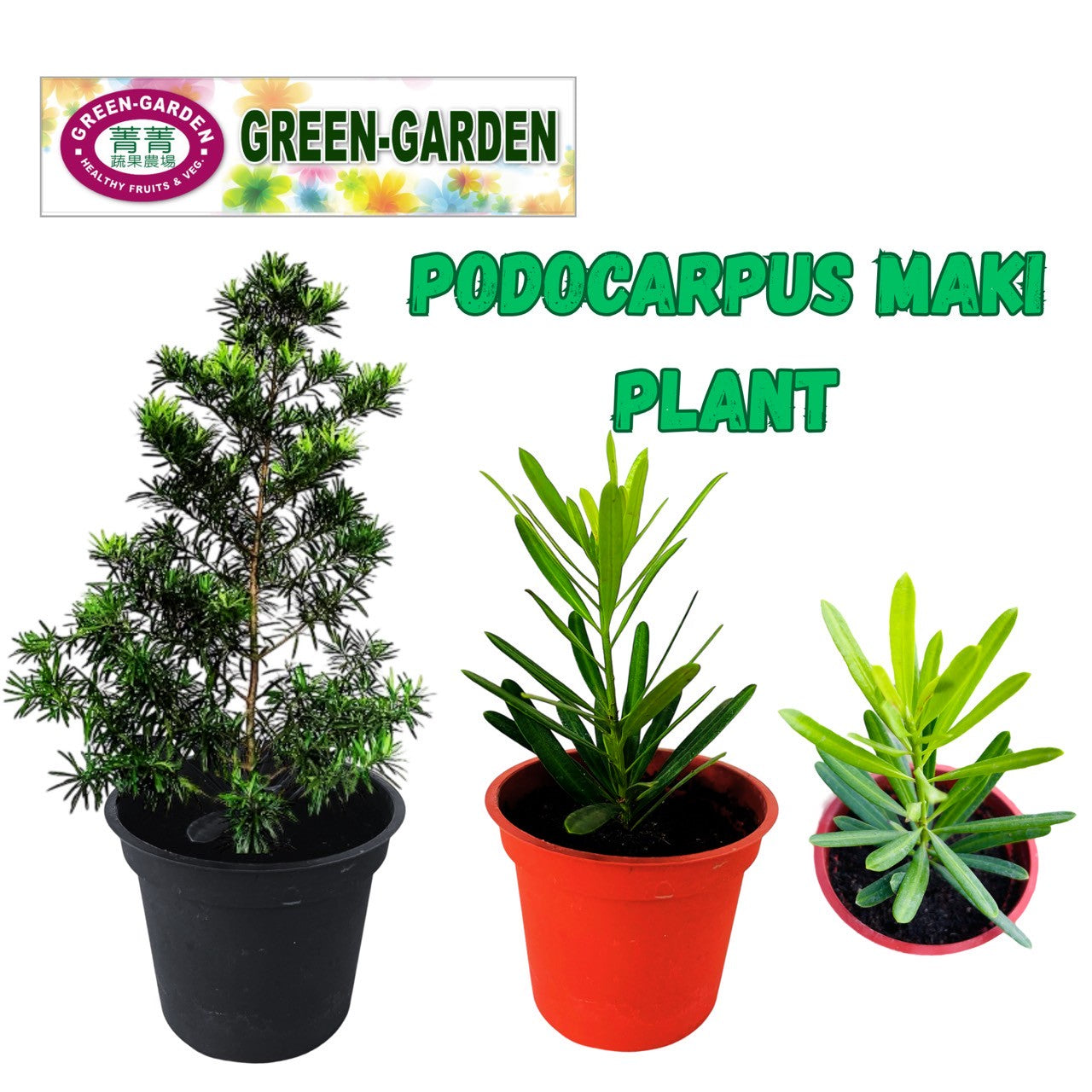Description
The Maki plant certainly Podocarpus macrophyllus 'Maki', commonly known as Maki Podocarpus, Buddhist pine, Japanese yew, or shrubby yew pine.
🌿 Quick Overview
Type: Evergreen conifer (gymnosperm), either a dense shrub or narrow, conical tree eureka-farms.com+14plants.ces.ncsu.edu+14jollygreennursery.com+14
Height & Spread: Typically reaches 8–12 ft tall, 3–5 ft wide (some sources say up to 15 ft tall) missouribotanicalgarden.org+1boethingtreeland.com+1
Growth Rate: Slow to moderate architecturalplants.com+3plants.ces.ncsu.edu+3thetreecenter.com+3
Cultivation & Care
Light: Thrives in full sun to partial shade, tolerates heavy shade plantmaster.com+9plants.ces.ncsu.edu+9adcocksnursery.com+9
Soil: Prefers rich, moist, well-drained, slightly acidic soils; avoids wet/alkaline soils to prevent chlorosis adcocksnursery.com+2missouribotanicalgarden.org+2adcocksnursery.com+2
Climate Hardiness: USDA Zones 7–11; some sources mention zones 7a to 11b adcocksnursery.com+4plants.ces.ncsu.edu+4poolerplants.com+4
Tolerances:
Salt, drought, heat
Deer resistant unbeleafable.ph+5plants.ces.ncsu.edu+5architecturalplants.com+5
Good for coastal plantings plantmaster.com+14boethingtreeland.com+14thetreecenter.com+14
Landscape Uses
Excellent as hedge, privacy screen, or specimen plant
Topiary & espalier friendly—responds well to pruning missouribotanicalgarden.org+14plants.ces.ncsu.edu+14thetreecenter.com+14
Works indoors/outdoors: used as houseplant under bright light or in containers in chillier zones missouribotanicalgarden.org
Distinguishing Features
Leaves: Glossy, leathery, lance-like needles (1–3 in), arranged densely in spirals missouribotanicalgarden.org
Foliage scent: Pleasant fragrance when crushed plantsbymail.com+2plants.ces.ncsu.edu+2missouribotanicalgarden.org+2
Reproduction: Non-showy pollen cones; seeds encased in fleshy red stalks, edible arils but poisonous if seeds swallowed thetreecenter.com+12plants.ces.ncsu.edu+12en.wikipedia.org+12
Special Considerations
Scale insects and chlorosis in alkaline soils can occur plants.ces.ncsu.edu+1missouribotanicalgarden.org+1
Toxicity: Low-level toxicity; red fleshy seed stalks edible, but the seeds themselves can be harmful
Indoor care: Needs bright light and moderate watering—ideal for containers or as indoor decorative plants in cold climates

